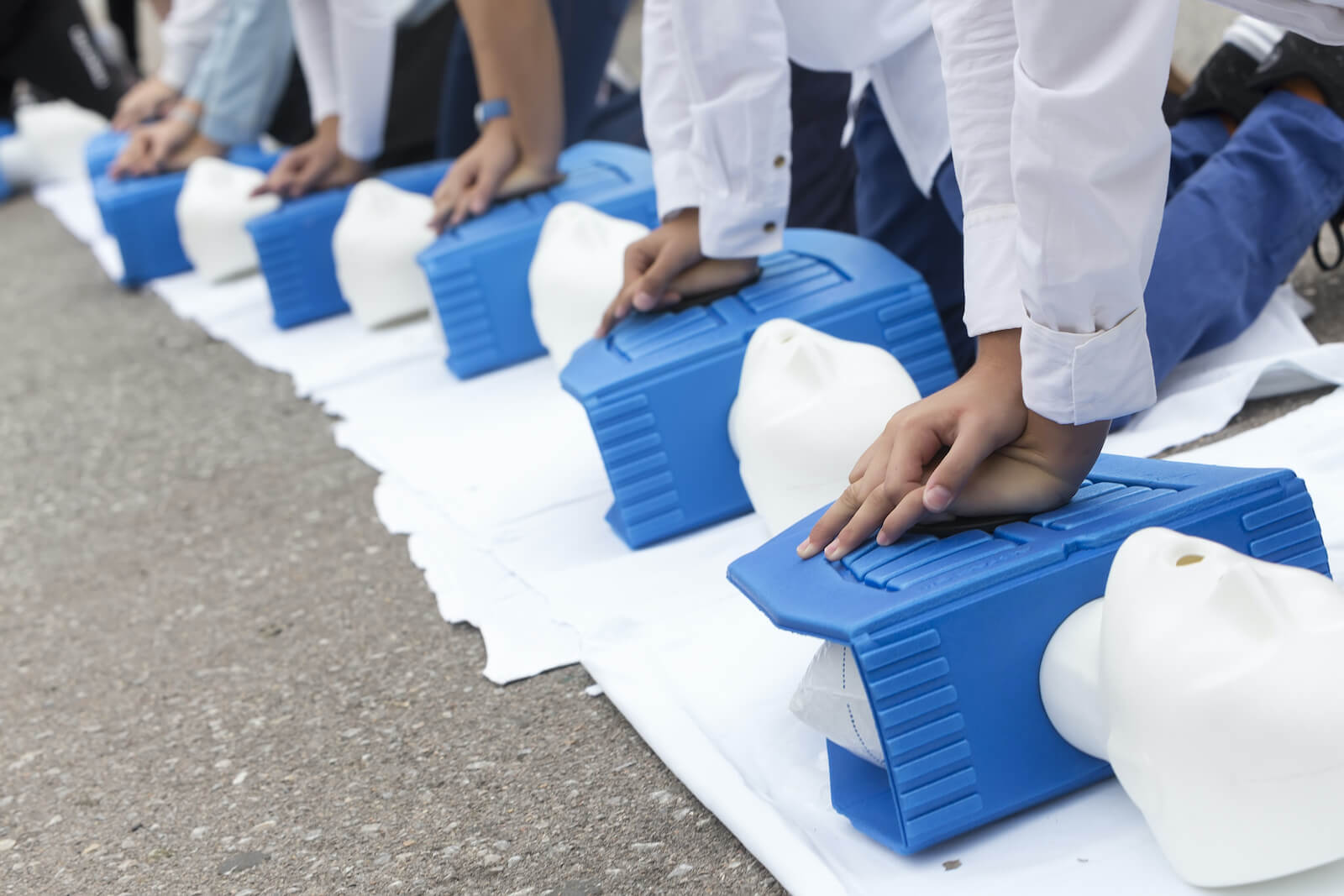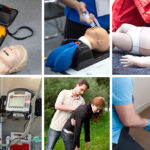Cardiopulmonary resuscitation (CPR) is a lifesaving technique that helps circulate blood during a cardiac arrest event. While ACLS and PALS certification courses teach CPR, they are intended for a different group of people than standard CPR training.
Standard CPR certifications are intended for bystanders looking to help their community by receiving training in responding to cardiac arrest emergencies. ACLS and PALS are intended for medical professionals. ACLS teaches these professionals how to respond to a wider array of emergencies while PALS specifically focuses on responding to infant and child cardiopulmonary responses.
American CPR Care Association is here for all of your cardiopulmonary resuscitation training and certification needs. We offer comprehensive, affordable, and flexible blended online CPR certifications. Continue reading to learn about the differences between CPR, ACLS, and PALS and whether they apply to your specific situation.
What is CPR?
CPR, or cardiopulmonary resuscitation, is an emergency lifesaving procedure performed when the heart stops beating. Performing CPR immediately following a cardiac arrest event can double or triple the chances of survival for patients.
CPR involves performing chest compressions and rescue breaths. Though experts recommend bystanders should perform compression-only CPR if they are not certified. Most online CPR classes include AED training in addition to CPR training. Using an automatic external defibrillator (AED) issues shocks to a heart in ventricular fibrillation. When the heart goes into cardiac arrest, a shock from a defibrillator can restore a normal heart rhythm.
The Steps of CPR
- Check the scene- ensure the safety of the situation so as not to put yourself or other bystanders in danger. Shout to the unresponsive person and ask “Are you Ok?” to see whether they are unconscious or just asleep.
- Call 911 for assistance. If the person obviously needs help, you can call or ask a bystander to call 911. Then send someone to get an AED. If an AED is unavailable or there is no bystander to access it, you should call 911 and begin administering CPR.
- Open the airway by tilting the patient’s head back slightly to lift their chin.
- Check for breathing. Listen for no more than ten seconds. If there is no breathing, begin CPR.
- Place your hands in the middle of the chest, one over the other. Use your body weight to help administer compressions at least two inches deep at a rate of 100 compressions per minute.
- Deliver rescue breaths with the person’s head tilted back slightly and the chin lifted. Pinch the nose shut and place your mouth over the person’s mouth to form a complete seal. Blow into the person’s mouth and watch for the chest rising. Deliver two rescue breaths and continue compressions.
- If the chest does not rise with the first rescue breath, re-tilt the head before delivering another breath. If it still doesn’t rise, the patient might be choking. After each set of 30 chest compressions and before attempting breaths, look for a foreign object, and if you see one, remove it.
- Continue performing CPR cycles, repeating chest compressions, and rescue breaths until the person exhibits signs of life, an AED becomes available, or EMS or a trained medical responder arrives on the scene. End the cycle if the scene becomes unsafe or you cannot keep performing CPR due to exhaustion.
Who Should Receive Their CPR Certification?
CPR certifications are for anyone who wants to be able to provide a service to their community and potentially save lives. However, there are specific industries that require CPR certification such as doctors, nurses, healthcare workers, police, sheriffs, firefighters, rescue personnel, and other emergency responders. The laws for obtaining your CPR certification for certain professions vary from state to state.
For example, in Virginia, a law passed by the General Assembly requires all teachers to obtain a CPR certification. These professionals typically require more advanced training in addition to CPR certifications.
What is ACLS?
ACLS is designed for healthcare professionals directly participating in the management of cardiopulmonary arrest or other cardiovascular emergencies and for personnel in emergency response. This class teaches the following skills:
- Basic life support skills include effective chest compressions, using a bag-mask device, and using an AED.
- Recognizing and managing respiratory and cardiac arrest.
- Recognition and early management of peri-arrest conditions such as symptomatic bradycardia.
- Airway management.
- Related pharmacology.
- Management of ACS and stroke.
- Effective communication as a member and leader of resuscitation teams.
Who Should Receive Their ACLS Certification?
ACLS is for anyone who has to proficiently read and interpret ECGs, understand ACLS pharmacology, and regularly leads or participates in emergency assessment and treatment of pre-arrest, arrest, and post-arrest patients.
What is PALS Certification?
PALS certifications are different from CPR, BLS, and ACLS certifications. The difference is a focus specifically on responding to critically injured or ill infants or children. By the end of the course, professionals should learn PALS treatment algorithms, team dynamics, effective resuscitation, and effective pediatric assessment.
The topics covered in a PALS certification courses include:
- Timely recognition of and the interventions required to prevent respiratory and cardiac arrest and pediatric patients.
- A systematic approach to pediatric assessment using an initial impression, primary and secondary assessments, and diagnostic tests.
- Priorities and specific interventions for infants and children with respiratory and circulatory emergencies.
- The importance of effective communication, team dynamics, including individual roles and responsibilities during pediatric resuscitation.
- Key elements of post-resuscitation management.
- Intensive application of cardiopulmonary resuscitation (CPR)
- Respiratory management within the medical professionals’ scope of practice.
- Cardiorespiratory monitoring.
- Administration of the appropriate medications and electrical therapies when presented with arrhythmias.
- Rapid capsular access to administer fluid and medications.
With PALS, the ultimate goal is to ensure the most favorable outcome for all cardiopulmonary emergencies with infants and children.
Who Should Receive Their PALS Certification?
The PALS certification is intended primarily for nurses and paramedics or those currently working with emergency response, emergency medicine, intensive care, and critical care units. Any field or position that takes the responsibility of caring for a child’s life should receive their PALS certification.
This course teaches teams how to respond to these emergencies in a coordinated effort. It uses simulated pediatric emergencies to reinforce important concepts of a systematic approach to pediatric assessment, basic life support, PALS treatment algorithms, effective resuscitation, and team dynamics.
What’s the Difference Between CPR, ACLS, and PALS?
CPR, ACLS, and PALS have specific applications, and you should be aware of them to understand which classifications you need the most.
CPR is intended for everyday bystanders trying to be of more service to their community. The more people who receive their CPR certification, the more likelihood there is that a bystander will be able to save someone’s life if they suffer an out-of-hospital sudden cardiac arrest.
ACLS and PALS are more specialized and are intended for medical professionals who have to regularly respond to cardiopulmonary emergencies. ACLS covers a broader spectrum of cardiac emergencies while PALS focuses exclusively on infant and children cardiopulmonary care.
Conclusion
Whether you’re a bystander looking to sharpen your CPR skills or you’re a professional worker, American CPR Care Association is here for all of your CPR skill needs. Our online certifications offer flexibility and expertise that makes sharpening your cardiac arrest response skills simple and attainable.
Contact us today to learn more about what American CPR Care Association can do for you.







